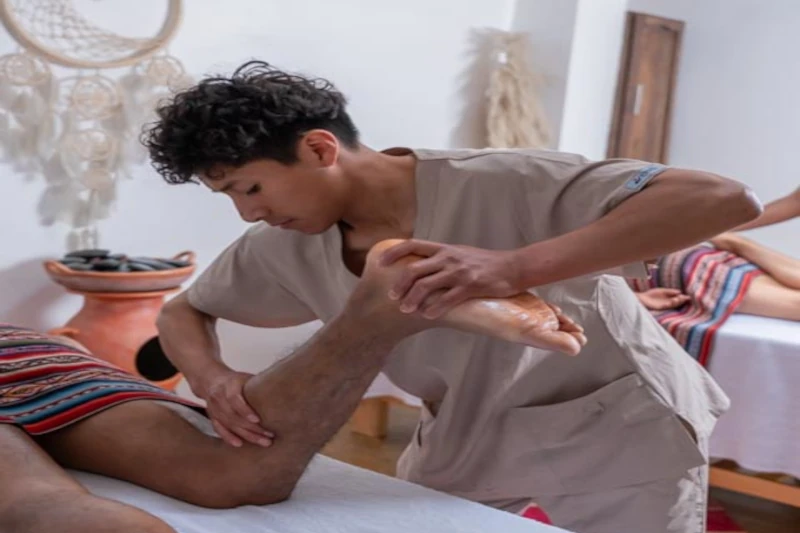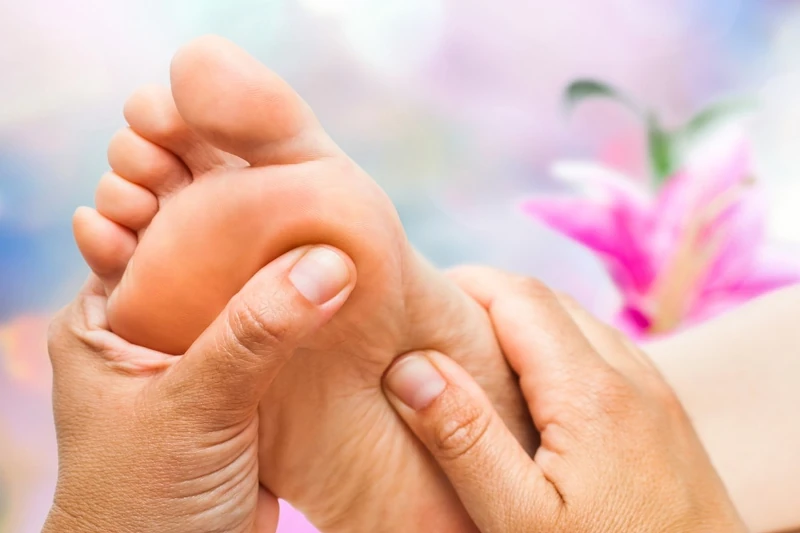Reflexology is an ancient practice rooted in the belief that specific points on the feet, hands, and ears correspond to different body organs and systems. By applying pressure to these points, reflexologists aim to promote health in the corresponding areas of the body. This practice is not only a form of alternative therapy but also a cultural tradition with deep historical roots.
Origins and Historical Context
Reflexology’s history stretches back thousands of years. The earliest records suggest its practice in ancient Egypt, where hieroglyphics depict healers applying pressure to the feet. Similarly, in ancient China, reflexology was an integral part of traditional medicine, believed to balance the body’s energy flow and promote healing. These ancient societies viewed reflexology not merely as a physical treatment but as a holistic practice that aligns the body, mind, and spirit.
Evolution Across Cultures

As reflexology spread across continents, it evolved to incorporate various cultural nuances. In India, reflexology blended with Ayurvedic practices, focusing on life energy and wellness. In Japan, the practice integrated with shiatsu, emphasizing pressure points for health benefits. Each culture adapted reflexology to its unique health philosophies, enriching the practice with diverse perspectives and techniques.
Modern Adaptations and Practices
In contemporary times, reflexology has gained recognition as a complementary therapy. Modern reflexologists often combine traditional techniques with scientific insights, offering a more nuanced understanding of its effects on the body. This adaptation not only honors its historical roots but also enhances its applicability in today’s health landscape, making it accessible to a broader audience seeking holistic health solutions.
The Science Behind Reflexology
While reflexology is steeped in tradition, modern science has begun to explore its potential benefits. Also studies suggest that reflexology may help reduce stress and anxiety, alleviate pain, and improve overall well-being. Besides the practice is thought to stimulate the nervous system, enhance circulation, and promote the release of endorphins, which are natural painkillers.
Neurological Benefits
Reflexology is believed to stimulate neural pathways, creating a calming effect on the brain. This stimulation is thought to enhance the body’s ability to handle stress, reducing anxiety levels. By targeting specific reflex points linked to the brain, reflexologists aim to promote mental clarity and emotional balance, providing a holistic approach to mental health care.
Circulatory Enhancements
Improved circulation is one of the key benefits attributed to reflexology. The gentle pressure applied during sessions is thought to increase blood flow throughout the body, ensuring that nutrients and oxygen reach vital organs more efficiently. This enhanced circulation may also aid in detoxification, helping to remove toxins and promote overall health.
Pain Alleviation Mechanisms
Reflexology is also associated with pain relief, attributed to its potential to release endorphins. These natural painkillers can reduce discomfort and promote a sense of well-being. By addressing reflex points related to specific areas of pain, reflexologists can target chronic conditions like migraines or arthritis, offering a natural alternative to pain management.
Reflexology for Stress Relief

Stress is a common affliction in today’s society, affecting our physical and mental health. Adittionally reflexology offers a natural, non-invasive way to manage stress. By targeting specific reflex points, reflexologists can help calm the nervous system and promote relaxation. The rhythmic pressure applied during a reflexology session can also help reduce cortisol levels, a hormone associated with stress.
Targeting Stress-Related Reflex Points
Reflexologists focus on areas of the feet believed to correspond with stress-related body systems. By applying pressure to these points, they aim to release tension and promote relaxation. Techniques such as thumb walking and finger pressure are used to stimulate these points, helping clients achieve a state of tranquility and peace.
Hormonal Balance and Cortisol Reduction
Stress often leads to elevated cortisol levels, a hormone linked to various health issues. Reflexology is thought to regulate hormone production, helping to lower cortisol levels naturally. This hormonal balance is crucial in managing stress, reducing the risk of stress-related health problems, and promoting overall well-being.
Emotional and Mental Relaxation
Beyond physical benefits, reflexology offers emotional relief by encouraging the release of tension. The soothing environment of a reflexology session, combined with the gentle pressure techniques, can help clients let go of emotional stress. Also this holistic approach addresses the mental aspects of stress, promoting a sense of calm and balance that extends beyond the session.
Reflexology for Pain Management

Pain management is another area where reflexology shows promise. Whether it’s chronic pain, headaches, or muscle tension, reflexology can provide relief by improving blood flow and reducing tension in the body. By focusing on the feet, reflexologists can address pain in various parts of the body, offering a holistic approach to pain management.
Addressing Chronic Pain Conditions
Chronic pain conditions, such as fibromyalgia and arthritis, can significantly impact quality of life. Reflexology offers an alternative approach by targeting reflex points associated with these conditions. Through regular sessions, clients may experience reduced pain intensity and improved mobility, enhancing their overall well-being.
Alleviating Headaches and Migraines
Headaches and migraines are common ailments that reflexology can help alleviate. By focusing on reflex points related to the head and neck, reflexologists aim to relieve tension and improve circulation. This targeted approach can reduce the frequency and severity of headaches, offering a natural remedy for those seeking relief.
Muscle Tension and Spasm Relief
Muscle tension and spasms often result from stress or physical exertion. Reflexology addresses these issues by promoting relaxation and improving blood flow to affected areas. The practice can help release tight muscles, reduce spasms, and enhance flexibility, providing a holistic method for managing muscular discomfort.
The Cultural Significance of Reflexology
Reflexology is more than just a therapeutic practice; it’s a cultural tradition that reflects the values and beliefs of the societies that embrace it. In Andean cultures, for example, reflexology is part of a broader tradition of holistic healing that emphasizes the interconnectedness of mind, body, and spirit.
Reflexology in Andean Cultures

In the Andean regions, reflexology is often practiced alongside other traditional healing techniques, such as fire therapy and Bamboo massage. These practices are rooted in a deep respect for nature and the belief in the body’s ability to heal itself. Reflexology sessions in these cultures may also incorporate elements of spiritual healing, such as rituals and ceremonies that honor the connection between the individual and the natural world.
Cultural Variations and Practices
Different cultures have tailored reflexology to fit their unique health philosophies. In Native American traditions, reflexology may be combined with herbal remedies, emphasizing natural healing. Hence for African cultures, reflexology is sometimes integrated with dance and music, reflecting a holistic approach to health that celebrates community and tradition.
Spiritual and Holistic Connections
For many cultures, reflexology is intertwined with spirituality and holistic health practices. It’s often seen as a way to connect with the universe’s energy, promoting balance and harmony within the individual. Also this spiritual aspect adds depth to the practice, making it a meaningful ritual that goes beyond physical healing.
Incorporating Reflexology into Your Life
If you’re interested in exploring reflexology for stress relief or pain management, there are several ways to incorporate this practice into your life. In fact you can visit a trained reflexologist throughout the session.
Practicing Reflexology at Home
For those who wish to practice reflexology at home, there are many resources available, including books, online tutorials, and workshops. You can start by learning about the reflex points on the feet and practicing gentle pressure techniques. Moreover remember that reflexology is a complementary therapy and should not replace medical treatment for serious health conditions.
Creating a Relaxing Environment

Creating a calming space is essential for practicing reflexology at home. Set up a quiet area with comfortable seating, soothing music, and dim lighting to enhance relaxation. Consider using essential oils or diffusers to create an aromatic atmosphere that promotes tranquility and focus, allowing you to fully immerse yourself in the practice.
Conclusion
Incorporating reflexology into your life can open new pathways to health and well-being, drawing on the wisdom of ancient cultures to address modern challenges. Moreover we continue to explore the potential of this practice, we honor the cultural heritage that has preserved it through the ages, offering a holistic approach to healing that resonates with people worldwide. Embrace reflexology as a journey towards balance, harmony, and a deeper understanding of your body’s innate ability to heal.


